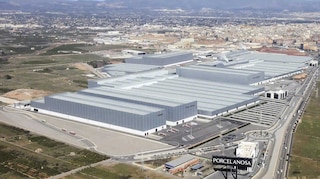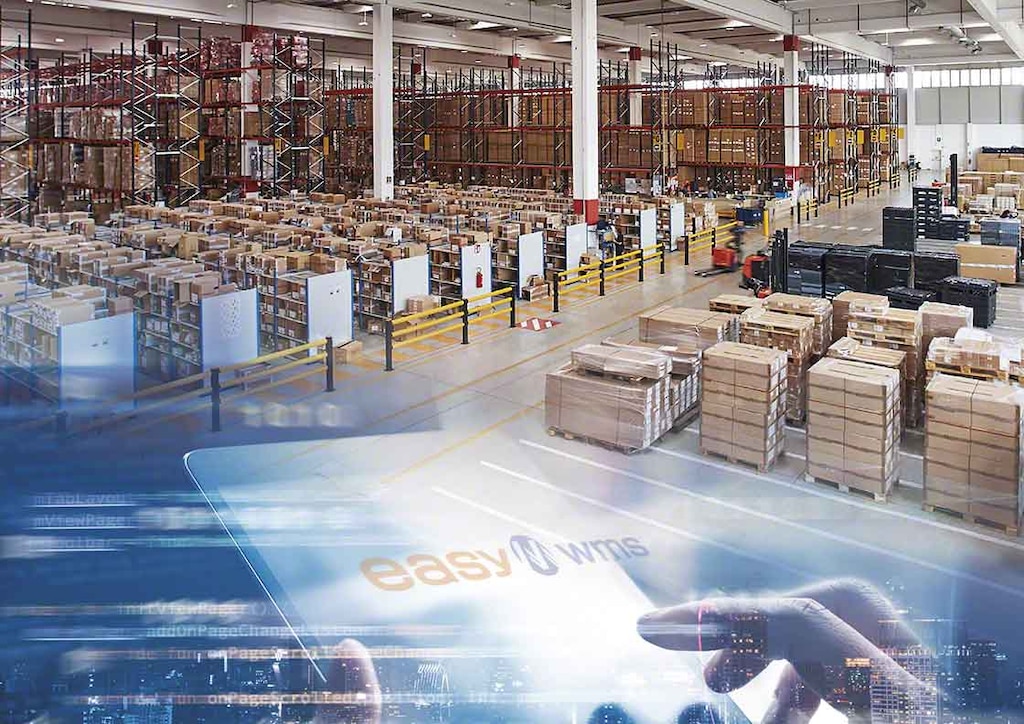
Logistics centers: the cornerstone of the supply chain
Logistics centers have become a key player in an evermore complex supply chain. The logistics transformation undergone in recent years has brought about the creation of large logistics operations centers near big cities. At these facilities, various logistics providers share space with the aim of creating synergies, boosting productivity, and cutting costs. These areas, also known as logistics zones and hubs, freight villages, and industrial parks, are specifically designed to concentrate logistics and transportation activities.
Logistics centers are also associated with fulfillment and distribution centers, that is, spaces designated by companies to store, prepare, and distribute their products. In other words, logistics centers are warehouses that have been adapted and modernized to be able to take on more logistics tasks, such as the receipt, internal transport, storage, preparation, and distribution of goods.
In this article, we’ll delve into the twofold definition of a logistics center, its functions, and the various types that exist.
Logistics centers as a logistics activities zone
Logistics activity centers are areas in which business activities are carried out. They are specially prepared to perform logistics tasks. Generally speaking, these types of logistics facilities are located near one or various transportation hubs to facilitate the movement of the goods.
These large installations were created as a result of the changes experienced by the supply chain over the past few decades, which has been further accentuated by the e-commerce boom.
This transformation of the model has made it necessary to reconfigure logistics spaces and create large areas in which various providers can centralize all operations related to goods storage, distribution, and transportation on both a national and international level. All of this is aimed at fomenting productivity and lowering costs.
Types of logistics activity centers
When we talk about these kinds of facilities as areas within cities, there are several varieties, depending on the particular tasks they carry out and their location. In general, they can be classified as:
- Port-centric logistics zones: these are infrastructures related to port-, maritime-, or river-based activity. The main feature of port-centric logistics zones is their prime geographic location, close to the ocean/sea and offering intermodal logistics with good air, sea, and/or land connections.
- Freight villages: in these areas, various transportation, logistics, and distribution activities are clustered together. As opposed to port-centric logistics zones, these facilities primarily provide freight-related transportation services. They are commonly found in the vicinity of urban areas, as they supply products to customers in major cities.
- Logistics hubs: these are the epicenter in which all activities linked to goods transportation, logistics, and distribution are carried out by different providers. They stand out for their large size and privileged location.
- Logistics platforms: these comprise specialized logistics areas with the necessary elements for streamlining goods transportation, storage, and dispatch. These centers don’t house any type of production process, as they are limited to managing products from their entry to their exit.
- Industrial parks: as opposed to logistics platforms, these installations can be equipped with an area where manufactured goods are handled.
Logistics centers as distribution centers
Logistics centers are also commonly referred to as form of warehouse (in contrast with an area comprising the logistics activity of various companies in one city, as explained in the section above). In this sense, logistics or distribution centers are spaces in which products are stored, orders are prepared, and, subsequently, dispatches are organized for distribution to both retail and wholesale businesses. Tasks related to the supply chain are fulfilled in these places: goods receipt, internal transport, storage, preparation, and distribution.

To carry out all these operations, logistics centers require the space to be optimized and designed so that the storage, picking, loading and unloading areas, and even the offices are in sync. Likewise, logistics centers rely on latest-generation technology. They’re equipped with automated storage solutions and handling equipment, as well as IT systems capable of monitoring thousands of goods in real time.
Efficient logistics centers are able to add value to the supply chain. There are three factors that help us to define the characteristics of logistics centers as well as their competitiveness:
- Size: the larger the surface area, the greater the capacity, and the more complex the internal goods transport will be. It’s best to find a balance between the space and the storage capacity required.
- Design: to conduct the various operations, logistics centers have one or more storage systems, pieces of handling equipment, loading docks, and offices. The layout of those elements should be as optimized and flexible as possible to be able to respond quickly to any need.
-
Location: the location of the logistics center has an effect not only on a construction level, but also, and especially, in the strategic sense. The spot chosen will depend on four basic factors: type of product stored, infrastructure costs, order demand, and competition.
Logistics center functions
The mission of a logistics center, in terms of a single installation, is to store, prepare, and distribute products to retail and wholesale businesses in the most effective way. It does all of this with a view to improving supply chain throughput.
The work of logistics centers goes beyond mere goods storage, as they participate directly in the following supply chain processes:
- Goods receipt: every day, these facilities receive products from production centers and other suppliers. Proper organization of the loading area is the key to an efficient center.
- Storage: after checking the goods, they are deposited in the corresponding storage systems, based on their characteristics and turnover.
- Internal transport: flows of goods must be as agile as possible. It’s essential to devise optimal routes so that automated and manual handling equipment operate at full capacity in the logistics center.
- Picking: this is the most important yet complex activity carried out in these facilities. Optimizing picking routes raises productivity and brings down costs for companies.
- Stock management: knowing the status of all SKUs in the warehouse in real time is fundamental for preventing errors that could impede the installation from functioning correctly.
- Dispatch: orders are distributed to retail and wholesale customers alike.
Difference between warehouses and logistics centers
The main difference between a warehouse and a logistics center as a storage installation lies in the activity and operations that take place in them.
In the beginning, there was no considerable difference between a warehouse and a logistics center, since they served the same purpose: to store the largest amount of goods possible. Over time, the vast majority of installations have turned into logistics centers. They not only store products, but also participate in all activities linked to the supply chain.
Therefore, logistics centers are equipped with all the essential elements for conducting inventory control, order preparation and packaging, internal goods transport, and distribution. They even have offices to supervise all of those operations to ensure they are being carried out correctly.
Loosely speaking, we can say that traditional warehouses gave rise to today’s logistics centers, which have more operations, increased efficiency, and greater participation in the supply chain.
Logistics Centers 4.0
Big data and the Internet of Things (IoT) are revolutionizing the supply chain. Logistics 4.0 is already a reality, so it’s becoming more and more common to talk about Logistics Centers 4.0.

Nowadays, logistics centers functioning as warehouses maintain minimal inventories of high-turnover items and provide immediate service. To raise efficiency and remain competitive, many companies choose to implement cutting-edge technology in their installations.
Likewise, Logistics Centers 4.0 not only digitalize their processes, but also leverage continuous information flows, data analytics, and intelligent machine control, among other tactics. They have IT systems that can monitor millions of items in real time, as well as storage systems and automated handling equipment that perform multiple tasks automatically.
The implementation of all this technology is also gaining ground in logistics centers in terms of activity areas. The huge amount of movements produced in a logistics activities area or hub make automation vital for attaining that much sought-after competitiveness. In the end, the objective of logistics zones and distribution centers is clear: to anticipate changes in demand and meet customers’ new needs as quickly as possible.
